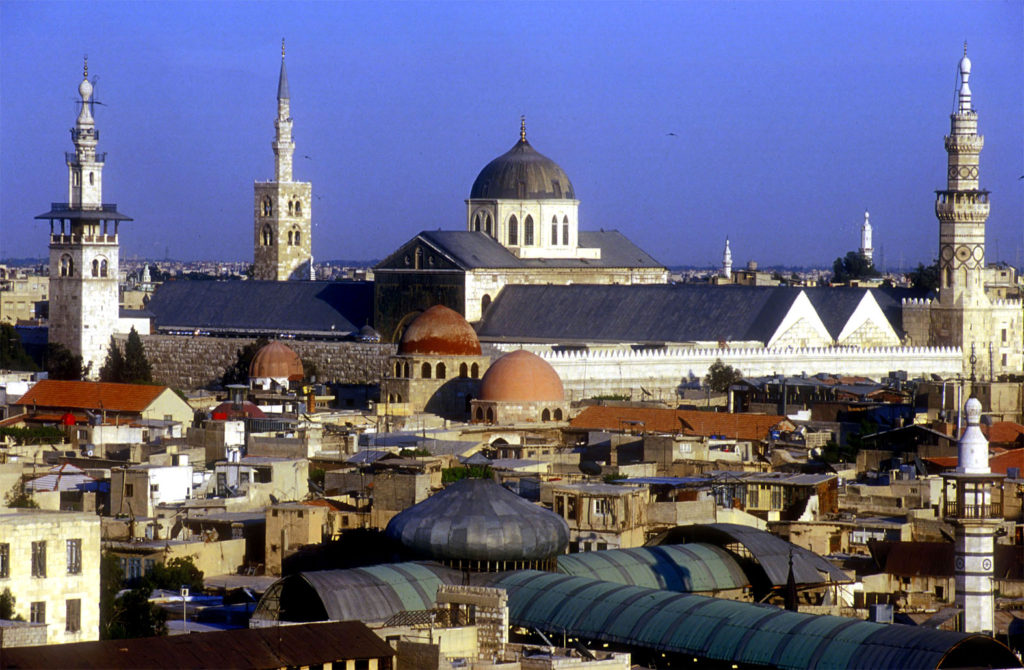Articles
“Masterpieces from the V&A” in Damascus
Article author: FUNCI
Date of publication of the article: 20110624
Year of publication: 2011
Article theme: Art, Exhibitions.
The exhibition World Ceramics: Masterpieces from the V&A will open as the finale to-the Damascus Arab Capital of Culture 2008 activities
The Victoria and Albert Museum (V&A), London, boasts the largest ceramics collection in existence.
This touring exhibition is a rare opportunity to see 116 of the greatest treasures from the V&A’s world renowned collection while the galleries in London are being refurbished to reopen in September 2009.
“World Ceramics: Masterpieces from the V&A” explores the history of international ceramics from 3000 BC to the present day. Bringing together works from different parts of the world in exciting juxtapositions, the exhibition highlights the links between all the world’s great ceramic traditions. It also shows how international trade and cultural exchange spread manufacturing technologies, styles and usage – often dramatically changing the course of ceramic history.
Chronologically arranged in nine thematic sections, the exhibition examines specific areas or periods, such as the early ceramics of China and its immediate neighbours. It looks at the cross-currents between Asia, the Middle East and Europe and at the luxury wares made for European Medieval and Renaissance courts. The exhibition concludes with a survey of 20th-century ceramics, ranging from Russian Revolutionary porcelains to Post-Modern ceramic sculpture. A highlight of this section is Picasso’s 1954 vase painted with the ‘Artist at his Easel’.
Many of the exhibits on display are outstanding and unique examples of the potter’s art. Notable among these is a life-size goat from Augustus the Strong’s extraordinary porcelain menagerie at Dresden; examples of the supremely rare ‘Medici’ porcelain and ‘Saint-Porchaire’ ware; and Sèvres porcelain busts of Louis XVI and Marie Antoinette made shortly before their execution.
The exhibition also includes a major representation of classic, imperial wares from Song and Ming dynasty China – for many the crowning achievement of the potter’s art – and a remarkable group of 19th-century exhibition pieces from Europe and Asia.
The Middle East, and Syria in particular, played a leading role in this story. To celebrate this fact, 12 outstanding Syrian ceramics from the collection of the National Museum of Damascus will join the exhibition at the Khan As’ad Basha. These represent the achievement of Syrian potters in the 12th to 14th centuries, when they mastered a range of techniques, including coloured glazes, painting under the glaze, and lustre decoration – these being three of the great contributions of Islamic potters to the history of ceramics. Its holdings range from ancient Egyptian artifacts and early examples of Chinese porcelain to contemporary studio pottery and industrially designed ceramics.
One of the mandates of Damascus Arab Capital of Culture 2008 is to celebrate the country’s historical, economic and cultural heritage. This city, thousands of years old, is situated at the meeting point of three continents, at the centre of the great civilizations of the Ancient world and at the crossroads of trade routes that flourished over many millennia (the Silk Road and the Spice Road).
Khan As’ad Basha, where the exhibition is present, is one of the most beautiful historical buildings of the city. Constructed by As’ad Pasha al-‘Azm in 1752, it is the largest of the city’s many former caravanserais, which provided lodgings and places of work for long-distance merchants and storage for their goods. The rooms are arranged in several stories around a central courtyard, which is covered by nine domes. Perhaps the most striking aspect of the building is its walls, which were built of striped or ablaq masonry, consisting of alternate courses of black basalt and white limestone.
Mark Jones, Director of the V&A, said:
‘Damascus has an immensely long history, making it one of the most fascinating of the world’s great cities. We are delighted to be taking the World Ceramics exhibition to the city while it holds the title of Arab Capital of Culture and hope to attract a broad range of visitors to see highlights from the V&A’s ceramics collection. The exhibition shows how much different parts of the world learned from each other in earlier times. We welcome the very generous sponsorship from Shell (Syria), without which the exhibition wouldn’t have happened.’
Shell (Syria) is the exhibition’s sole sponsor.


